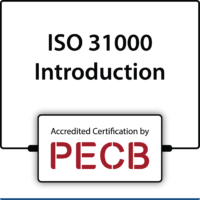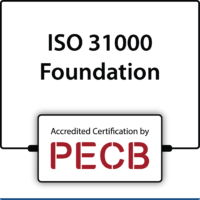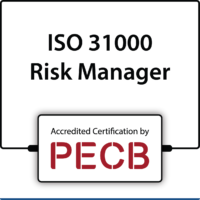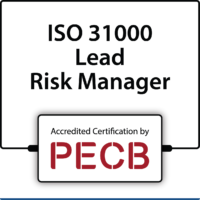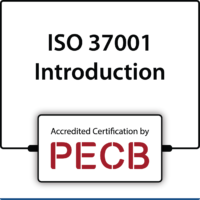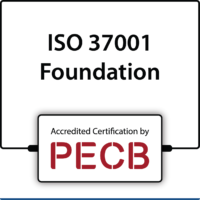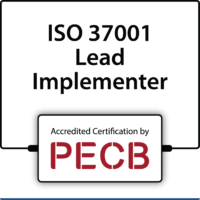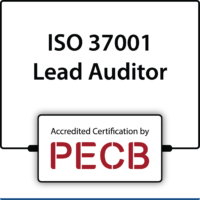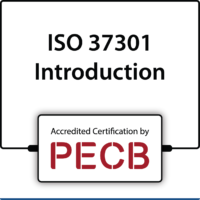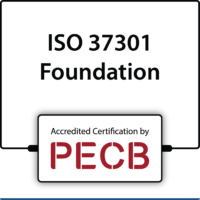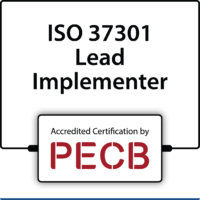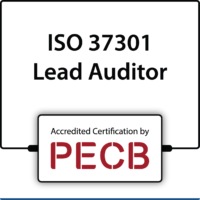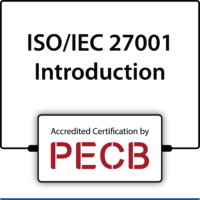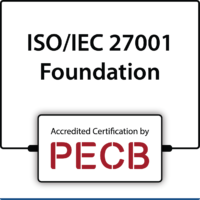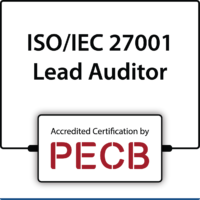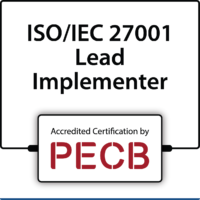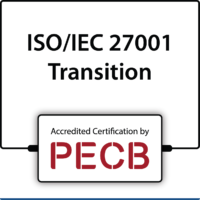GOVERNANCE, RISK, AND COMPLIANCE
Risk is present in every aspect of our life, from mundane everyday activities such as choosing a route to work, to complex corporate decisions such as opening a manufacturing plant in a different country. Much effort was put over the past decades to better understand risk and its nature, which led to the creation of methodologies and approaches that enable individuals and organizations to make accurate decisions based on logical reasoning. One of the most distinguished frameworks to address risk is provided by ISO 31000, an international standard that incorporates principles, proven practices, and guidelines on managing risks faced by organizations.
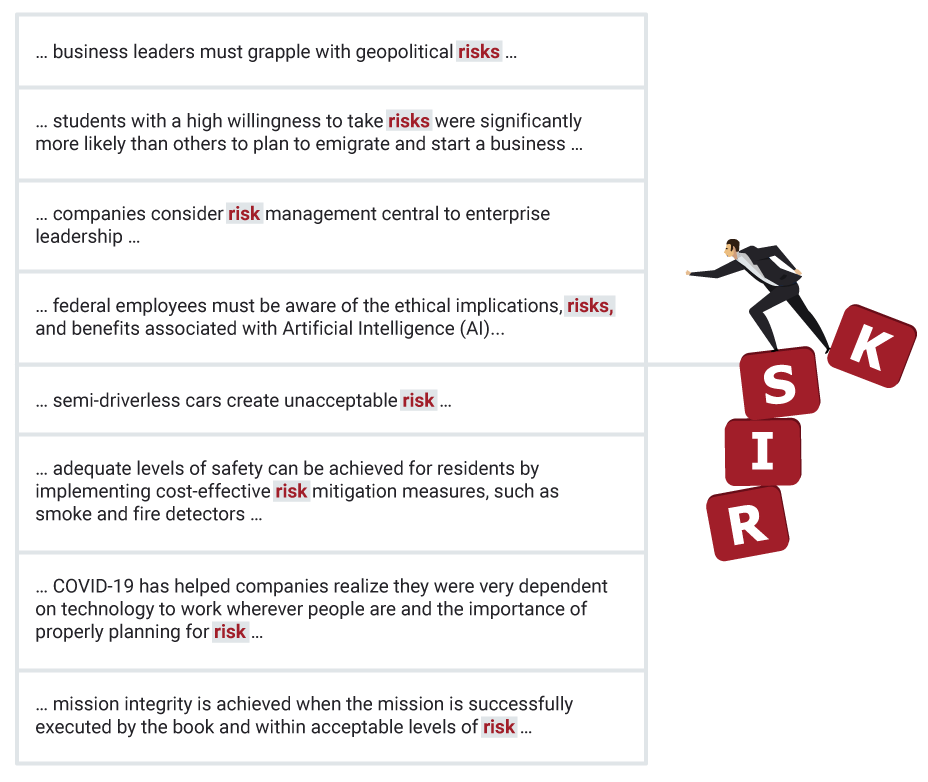
Figure 1: The word risk as used in several contexts
What is ISO 31000?
ISO 31000 is an international standard that provides guidelines on managing any type of risk in any business activity. The standard provides guidelines on principles, risk management framework, and application of the risk management process.
ISO 31000 is applicable to organizations of all types and sizes who seek to integrate risk management into business functions. It covers the risk management principles which are the foundation for managing risk, and guides organizations in developing a risk management framework by:
- Integrating risk management into organizational structures
- Designing a framework for managing risk that fits the organization’s context
- Implementing the risk management framework
- Evaluating the effectiveness and continually improve the suitability and adequacy of the risk management framework
- Demonstrating leadership and commitment (top management)
ISO 31000 considers the risk management process as an integral part of overall management and decision-making. The risk management process can be applied on a strategic level and organization-wide, but it can also be applied on projects, products, and processes. ISO 31000 provides guidelines on risk communication and consultation, defining of the scope, context, and criteria, risk assessment, risk treatment, monitoring and review, and lastly, recording and reporting of risks.
Why is ISO 31000 important for organizations?
Organizations performing in any industry in any place are constantly exposed to risks. Managing these risks based on the principles, framework, and process outlined in ISO 31000 provides a level of assurance that allows organizations to succeed and thrive in an environment of constant change. The implementation of ISO 31000 guidelines can improve operational efficiency by facilitating the integration of risk-based decision-making into governance, planning, management, reporting, policies, values, and culture of an organization.
ISO 31000 enables organizations to identify the potential risks that could hinder the achievement of business objectives. It will also help them to determine the significance of risks and decide which risks should be mitigated first in order to achieve the objectives before they affect the business, and effectively keep all other risks under control. In addition, ISO 31000’s best practices allow organizations to develop a desired risk management culture.
A risk management approach based on guidelines of ISO 31000 clearly indicates that organizations are committed to managing risks in every part of the business. It increases the public confidence among customers and other stakeholders as it demonstrates the organizations’ capabilities in mitigating internal and external threats. A risk management process based on ISO 31000 will enhance the reputation of an organization and give it a competitive advantage.
Why should you pursue a certification in ISO 31000?
An ISO 31000 certification demonstrates that you have the necessary competencies to support an organization in creating and protecting value. In addition, it shows that you are able to assist organizations in establishing a risk strategy, achieving strategic objectives, and making informed decisions.
Certification in ISO 31000 helps you:
- Distinguish yourself from other risk management professionals
- Demonstrate awareness of risk management principles and other underlying concepts of risk
- Demonstrate the competencies to establish a risk management framework that is tailored to the needs and context of an organization
- Show capability to apply the risk management process based on the recommendations of ISO 31000
- Show awareness of the importance of integrating risk management into significant activities and functions of an organization
- Have a more successful career in risk management
Why choose PECB?
As a global provider of training, examination, and certification services, PECB aims to help you demonstrate your commitment and competence by providing you valuable education, evaluation, and certification against internationally recognized standards.
Our ISO 31000 Risk Manager and ISO 31000 Lead Risk Manager certificates are accredited by IAS. The IAS Accreditation Mark provides additional value to the certificate and allows you to capitalize on the worldwide recognition that IAS holds.
How do I get started?
We at PECB are excited to welcome you to our global network. We will assist you throughout the entire process in order to offer you a worthwhile experience.
Contact us to start with the first step!
PECB Certified ISO 31000 Training Courses Available
Enhance your knowledge on risk management and create new career opportunities by participating in our ISO 31000 training courses
It is estimated that globally, over $1.5 trillion in bribes changes hands every year. Apart from the negative economic impact, bribery also impacts the whole society as it undermines trust, leads to unfairness, creates inequality, and stifles motivation. ISO joined the global fight against bribery by developing ISO 37001, an international standard that sets out the requirements for an anti-bribery management system (ABMS).
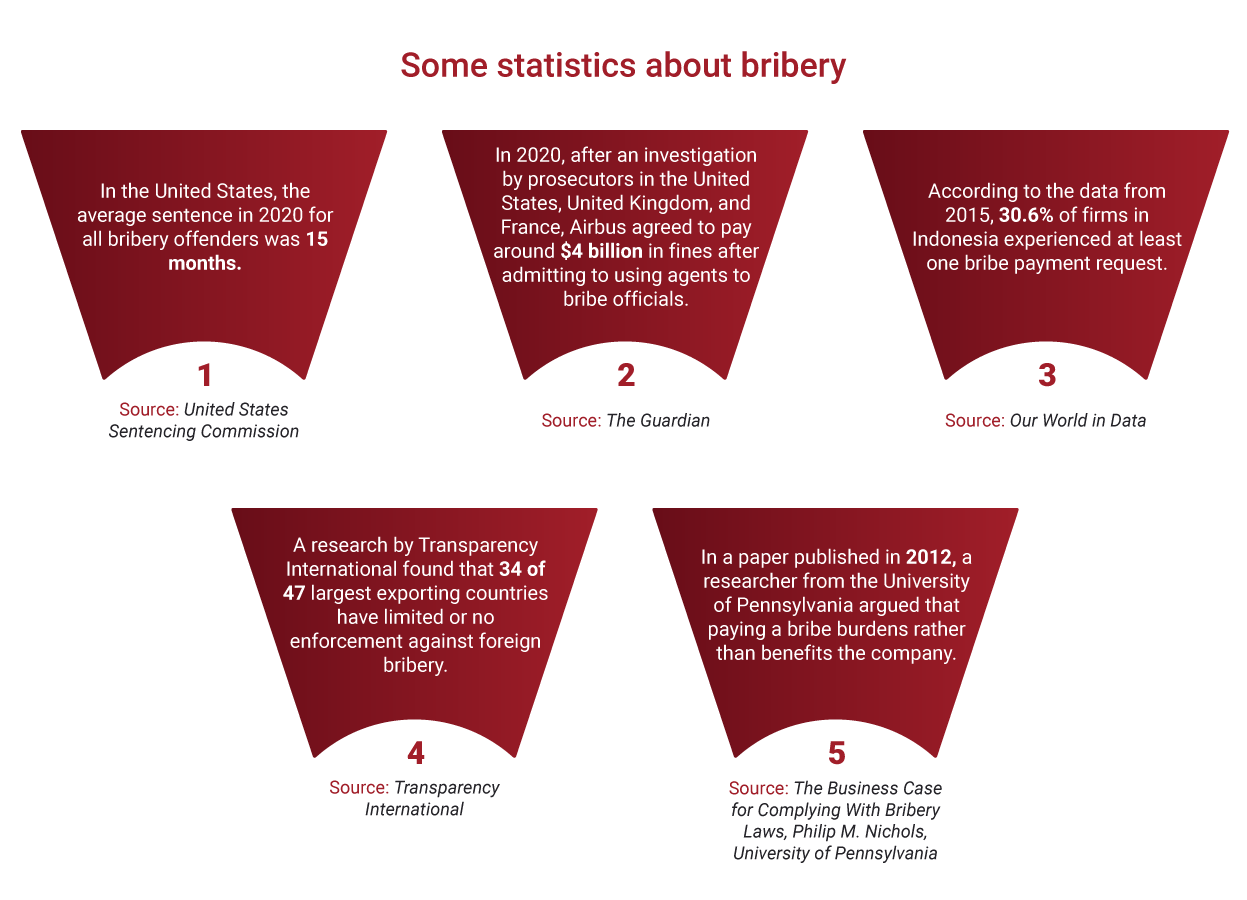
Figure 1: Some statistics about bribery
What is ISO 37001?
Published in 2016 as a Type A management system standard (MSS), ISO 37001 specifies the requirements and provides guidance for the establishment, implementation, monitoring, maintenance, and continual improvement of an ABMS.
An ABMS based on ISO 37001 is intended to help organizations effectively prevent, detect, and respond to bribery. Other forms of corruption, such as fraud, are not covered by the standard. The requirements of the standard are generic and applicable to all organizations, regardless of their type, size, and sector (public, private, or not-for-profit). Furthermore, ISO 37001 can be used to tackle bribery by or of the organization as well as direct and indirect bribery.
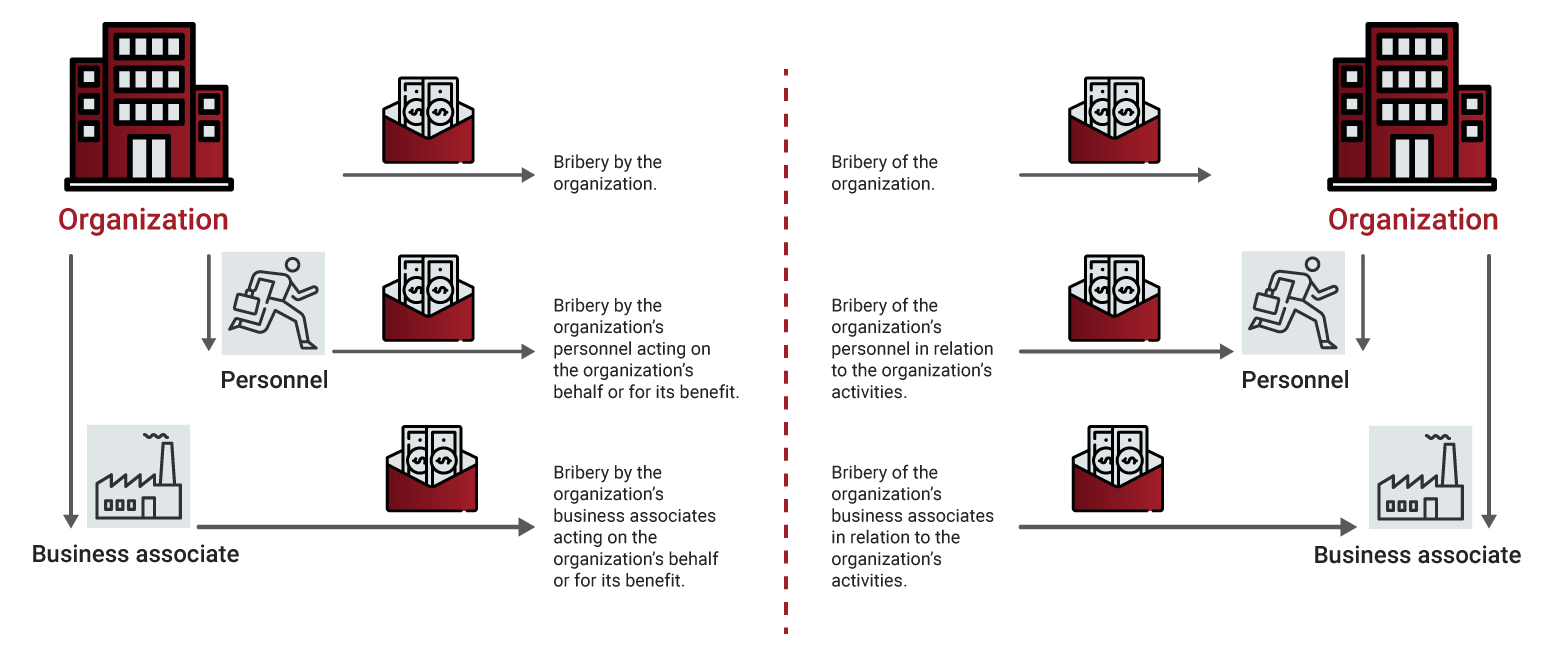
Figure 2: Applicability of ISO 37001
ISO 37001 follows the High-Level Structure (HLS) and shares the common terminology with other management system standards developed by ISO. This means that an ABMS can either be established as a stand-alone management system, be part of an overall compliance management system based on ISO 37301, or be integrated with other management systems based on standards such as ISO 37002, ISO 9001, and ISO 45001.
ISO 37001 benefits to organizations
Implementing an ABMS based on ISO 37001 can be a good strategic decision to demonstrate an organization’s commitment to effectively prevent, detect, and respond to bribery. Organizations seeking an effective ABMS will have to demonstrate their commitment to prevent bribery by establishing policies, procedures, and controls which contribute in reducing bribery risks. Nevertheless, the requirements of ISO 37001 are generic; therefore, organizations will have plenty of freedom to establish an ABMS which best suits their needs.
Some of the benefits that organizations would obtain by implementing an ABMS based on ISO 37001 include:
- Improved ability to detect, prevent, and respond to bribery by or of the organization
- Opportunity to certify the ABMS by undergoing a conformity assessment from an accredited conformity assessment body
- Establishment of processes that allow proper due diligence of prospective personnel and business associates
- Opportunity to contribute in the global fight against bribery
- Opportunity to shape, improve, or transform the culture of an organization
- Improved ability to respond, mitigate, and deal with the consequences if a bribery case occurs
- In certain jurisdictions, the existence of an internal mechanism to address bribery issues can reduce penalties in cases of wrongdoing
Why should you attend one of our ISO 37001 training courses?
As a global provider of training, examination, and certification services, PECB will help you become a successful anti-bribery consultant, auditor, or implementation/auditing team member.
- ISO 37001 Introduction training course is appropriate for professionals who want to obtain a brief and overall understanding of ISO 37001 requirements for an ABMS
- ISO 37001 Foundation training course is appropriate for entry-level professionals who want to acquire a clause-by-clause overview of ISO 37001 requirements for an ABMS.
- ISO 37001 Lead Implementer is a five-day training course that will enable you to acquire the necessary competencies to implement, operate, maintain, and continually improve an ABMS based on ISO 37001.
- ISO 37001 Lead Auditor is a five-day training course that allows you to obtain the necessary capabilities to audit an ABMS against the criteria established by ISO 37001, based on the good practices and guidelines and requirements for auditing management systems outlined by ISO 19011 and ISO/IEC 17021-1.
Join the global fight against bribery!
Why choose PECB?
Internationally recognized, PECB certifications represent peer recognition and demonstrate your professional capabilities. Our ISO 37001 Lead Auditor and ISO 37001 Lead Implementer certificates are accredited by IAS. The IAS Accreditation Mark provides additional value to the certificate and allows you to capitalize on the worldwide recognition that IAS holds.
You can find other resources on anti-bribery and ISO 37001 by PECB below:
- PECB Anti-Bribery Conference 2021
- Anti-Bribery Management Systems based on ISO 37001 — Why and How? — PECB Insights
- Best Anti-Bribery and Compliance Books to Read in 2021 — PECB Insights
- Creating a Culture of Compliance: How to Build a Robust Anti-Bribery Compliance Program — PECB Insights
- The ISO 37001 and Anti-Bribery PECB Insights Conference 2017
How do I get started with ISO 37001 Training?
Contact us to start with the first step!
What is ISO 37301?
ISO 37301 is a Type A management system standard which sets out the requirements and provides guidelines for establishing, developing, implementing, evaluating, maintaining, and continually improving a compliance management system (CMS). A CMS provides organizations a structured approach to meet all compliance obligations, i.e., requirements that they mandatorily have to comply with such as laws, regulations, court rulings, permits, licenses, as well as those that they voluntarily choose to comply with such as internal policies and procedures, codes of conduct, standards, and agreements with communities or NGOs.
ISO 37301 can be applied to all organizations, regardless of their size, nature, or complexity of activity. CMS is based upon the principles of integrity, good governance, proportionality, transparency, accountability, and sustainability.
As with the most of management system standards, ISO 37301 also follows the high-level structure (HLS) developed by ISO. The HLS structure defines the common terminology and definitions used, as well as the clause sequence (1 to 10), where the requirements for the CMS are set out in clauses 4 to 10. The HLS enables organizations to integrate various management systems, meaning that organizations can either adopt a CMS as a stand-alone management system or they can integrate it with other existing management systems.
Didn’t ISO already publish a standard on compliance management systems?
Yes, in 2014, ISO 19600 Compliance management systems — Guidelines was published. The main difference between these two standards is that organizations can get certified against ISO 37301 by undergoing a conformity assessment via an independent third party. Nevertheless, ISO 37301 builds and expands upon its predecessor (ISO 19600), and organizations that established a CMS based on the guidelines of ISO 19600 already have a head start in complying with the requirements of ISO 37301.
Why is ISO 37301 important for organizations?
For organizations seeking growth and long-term success, consistently adhering to compliance obligations is a must, not an option. A CMS based on the requirements and guidance of ISO 37301 equips organizations with a set of tools (policies, processes, and controls) that allows them to establish and maintain a culture of compliance.
Organizations with a CMS based on ISO 37301 commit to sound norms of corporate governance, good practices, and ethical conduct. However, the CMS cannot completely eliminate the risk of noncompliance. In this regard, ISO 37301’s requirements and guidance improve the organization’s ability to identify and respond to noncompliance. In some jurisdictions, the existence of a CMS can be an indicator of the organization’s due diligence and commitment to compliance which may be useful in limiting legal liability and lowering penalties for contraventions of relevant laws.
ISO 37301 includes requirements that address competence, communication, and awareness. By complying with these requirements, organizations ensure that the vision of the top management is translated and embedded into the conduct of managers and employees. ISO 37301 also requires and encourages the establishment of concise and effective policies, procedures, and controls which set organizations on a path toward a compliance culture and high ethical and integrity standards.
ISO 37301 outlines the quest toward compliance, which begins with setting the tone at the top of the organization. The commitment toward a good compliance culture is articulated by the organization’s governing body and top management through a compliance policy and the setting of compliance objectives at various levels. In addition, the governing body and top management are also required to show leadership and commitment by providing the necessary resources, establishing a compliance function, defining the roles and responsibilities and so on. Above all, the governing body and top management should actively and visibly demonstrate their commitment to the CMS through their actions and decisions.
Why should you pursue a certification in ISO 37301?
Internationally recognized, PECB certifications represent peer recognition of an individual’s professional capabilities to contribute in an organization’s CMS, as an auditor, implementer, or CMS implementation team member. By attending one of our ISO 37301 training courses, you have the opportunity to develop your competence in order to help organizations meet their compliance obligations.
- ISO 37301 Introduction training course is appropriate for professionals who want to have a brief and general understanding of ISO 37301 requirements for a CMS
- ISO 37301 Transition training course is appropriate for professionals who are already acquainted with ISO 19600 and want to update their knowledge.
- ISO 37301 Foundation training course is appropriate for entry-level professionals and members of a compliance team. This two-day training course familiarizes you with ISO 37301 requirements and guidance for a compliance management system.
- ISO 37301 Lead Implementer is a five-day training course that allows you to acquire the necessary knowledge and skills to implement a CMS in an organization, based on the requirements and guidance of ISO 37301.
- ISO 37301 Lead Auditor is also a five-day training course which aims to improve your professional capabilities to audit a CMS based on ISO 37301, in compliance with the guidelines for auditing management systems provided in ISO 19011 and the certification process described in ISO/IEC 17021-1.
Benefits of implementing ISO 37301 in an organization
By implementing a CMS based on ISO 37301, organizations will be able to:
- Undergo a formal third-party conformity assessment for their CMS
- Develop a positive culture of compliance
- Quickly and effectively address compliance concerns
- Protect their reputation and safeguard their integrity by preventing and detecting unethical conduct
- Improve business opportunities and sustainability
- Carefully consider requirements and expectations of internal and external interested parties
- Develop strong and valuable relationships with regulators
- Increase the confidence of third parties in the organization’s capacity to achieve sustained success
- Build customer trust and loyalty
How do I get started with ISO 37301 training courses?
Considering the rapid development of industries and global market competition, being an ISO 37301 certified professional gives you the opportunity to help your organization continuously meet compliance obligations.
Our experts are willing to assist you in the process of obtaining an ISO 37301 credential and developing your career skills.
Contact us to begin with the first step
PECB Certified ISO 37301 Training Courses Available
Enhance your knowledge and advance your career by participating in our ISO 37301 training courses. Check the training courses below and find the one that suits you best.
What is ISO/IEC 38500?
ISO/IEC 38500 provides principles, definitions, and a model to help the governing bodies understand the importance of Information Technology (IT).This standard is intended to help all types of organizations in evaluating, directing and monitoring the use of Information Technology (IT), regardless of the degree of IT usage. It consists of management practices and decisions associated with the current and future use of IT. The purpose of this standard is to promote an effective, efficient and acceptable use of IT in all organizations by informing and guiding governing bodies in governing the IT use and establishing an IT governance vocabulary.
Why is IT Governance important for you?
ISO/IEC 38500 assists governing bodies to ensure that the use of IT contributes positively to the performance of the organization. Therefore, by fulfilling ISO/IEC 38500 requirements, the organizations are able to monitor IT usage, ensure business continuity and sustainability, align IT with business needs and ensure appropriate implementation and operation of IT assets.
Moreover, this standard will help you obtain the necessary expertise and knowledge to support organizations in establishing, implementing and continually improving a framework that complies with the principles and the model for good IT governance set by ISO/IEC 38500. It also enables you to gain the necessary skills to manage risks, encourage the exploitation of opportunities arising from the use of IT, and avoid inadequate application of ISO/IEC 38500 principles and IT systems. This standard allows you to understand the business strategy and align it with the technology strategy and advise the company on best practices of IT Governance.
With the current increasing trend of requirements for a more qualified staff, organizations are offering great career opportunities to individuals who are certified and have the appropriate experience.
Benefits of ISO/IEC 38500 – IT Governance
By becoming an ISO/IEC 38500 certified professional, you will have the opportunity to:
- Manage the IT investments properly
- Improve the performance of the organization
- Improve project governance
- Improve the competitive position of the organization
- Minimize IT risks
- Assure greater project success rates
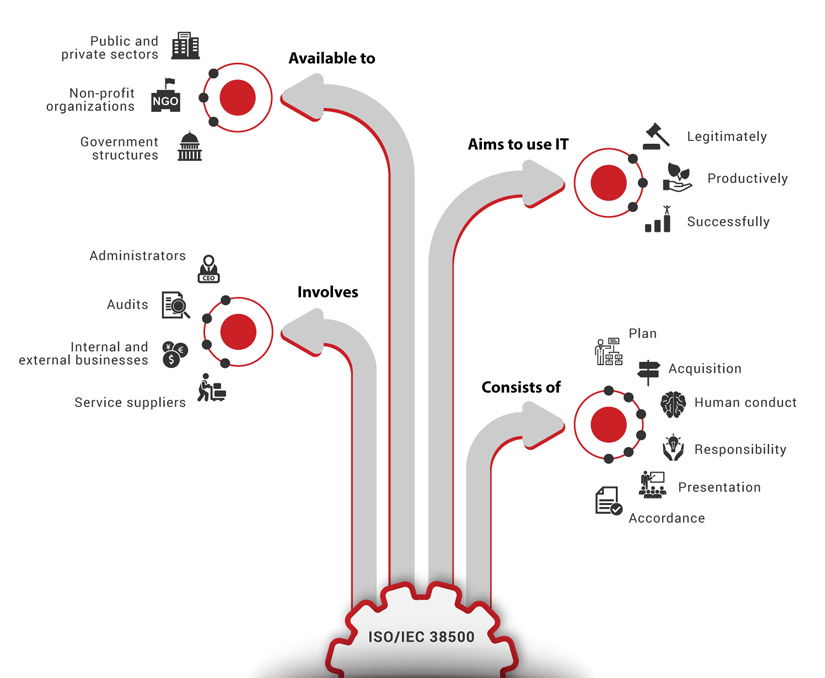
How do I get started with ISO/IEC 38500 Training?
Want to improve IT usage and ensure a positive contribution of IT to the organization’s performance? Our experts are here to support you ensure good IT governance in your organization.
Contact us to start with the first step
PECB Certified ISO/IEC 38500 training courses available
Learn more about IT Governance through the PECB ISO/IEC 38500 training courses. Contact us today to learn how this standard can lead you to the effective and efficient management of IT Governance. Check below to find the training that suits you best.
What is an Operational Risk Management (ORM) in Financial Institutions Certification?
An ORM in Financial Institutions certification demonstrates that operational risk managers have acquired the necessary competencies to exercise their function effectively. There are three levels of certification: Foundation, Manager, and Lead Manager. The content of these training courses cover various published sources, field standards, general market practices, as well as findings from recent research. Each level of certification provides a comprehensive view of ORM standards and theory and elaborates the best practices of the field.
Why is an ORM in Financial Institutions Training Course Essential for You?
The ORM in Financial Institutions training courses provide the knowledge and skills that professionals need to enter, manage, and lead the operational risk discipline in financial services. These include learning how to establish an operational risk management framework and how to utilize the methods and tools to identify, assess, mitigate, and monitor operational risk.
The qualified trainers, the content of the training courses, and the respective exams will help you acquire and demonstrate the knowledge and skills to exercise your role and function effectively and gain professional recognition in the market. By obtaining a PECB Certified ORM in Financial Institutions credential, you will be able to improve the reliability of business operations and avoid losses that may come from poor risk management.
Benefits of ORM in Financial Institutions Certification
An ORM in Financial Institutions certification will demonstrate that you:
- Understand the regulatory requirements and best practices of operational risk management in the financial services
- Learn how to establish and operate an operational risk management framework in the context of a financial organization
- Understand the approaches, methods and tools to identify, assess, mitigate, and monitor operational risk in the financial services industry.
Moreover, since this is a “Certification,” you will enjoy some benefits that a “Certificate” does not provide. Such benefits include:
- Standardized credentials
- Evidence of skill and experience
- Process
- Regular maintenance
- Legal determination of employment eligibility
- Worldwide recognition
How Do I Get Started with an ORM in Financial Institutions Training?
The objective of the PECB ORM in Financial Institutions trainings is to provide you with the necessary knowledge and skills of the ORM. Our experienced field experts will teach you everything you need to know to improve the operational risk management framework in your organization.
The Available PECB Certified ORM in Financial Institutions Training Courses
Expand your knowledge and improve your skills regarding operational risk management in the financial sector by attending a PECB ORM in Financial Institution training course. Check out the options below to find the training that best suits you and your career.
- ORM Foundation (two days)
This training course is available for everyone and introduces the foundations of operational risk management in financial institutions. The topics elaborated in this training course include: “Regulation & Governance,” “Framework and Policies,” “Risk Appetite,” “Incident Data Collection,” and “RCSA.” - ORM Manager (three days)
This course is available for participants who have at least two years of experience, including a minimum one year of experience in operational risk management. In addition to the topics discussed in ORM Foundation, this training course also elaborates “Risk Culture” and “Key Risk Indicators.” - ORM Lead Manager (five days)
This course is available for participants who have at least five years of professional experience, including at least two years of experience in operational risk management. In addition to the topics covered in ORM Manager, this training course also elaborates “Operational Risk Disclosures Reputation,” “Scenario Analysis” and “Capital Modelling.”
Whistleblowing is the act of reporting suspected wrongdoing or risk of wrongdoing. A large number of wrongdoings are reported to organizations or other authority from employees within the organization. According to ACFE’s (Association of Certified Fraud Examiners) 2020 Report to the Nations, 43% of occupational frauds were detected by tips, half of those coming from employees.
This has encouraged many organizations to consider improving their whistleblowing policies, creating safe channels for whistleblowers, as well as protecting and supporting them. ISO 37002’s guidelines for a WMS aim to provide just that.
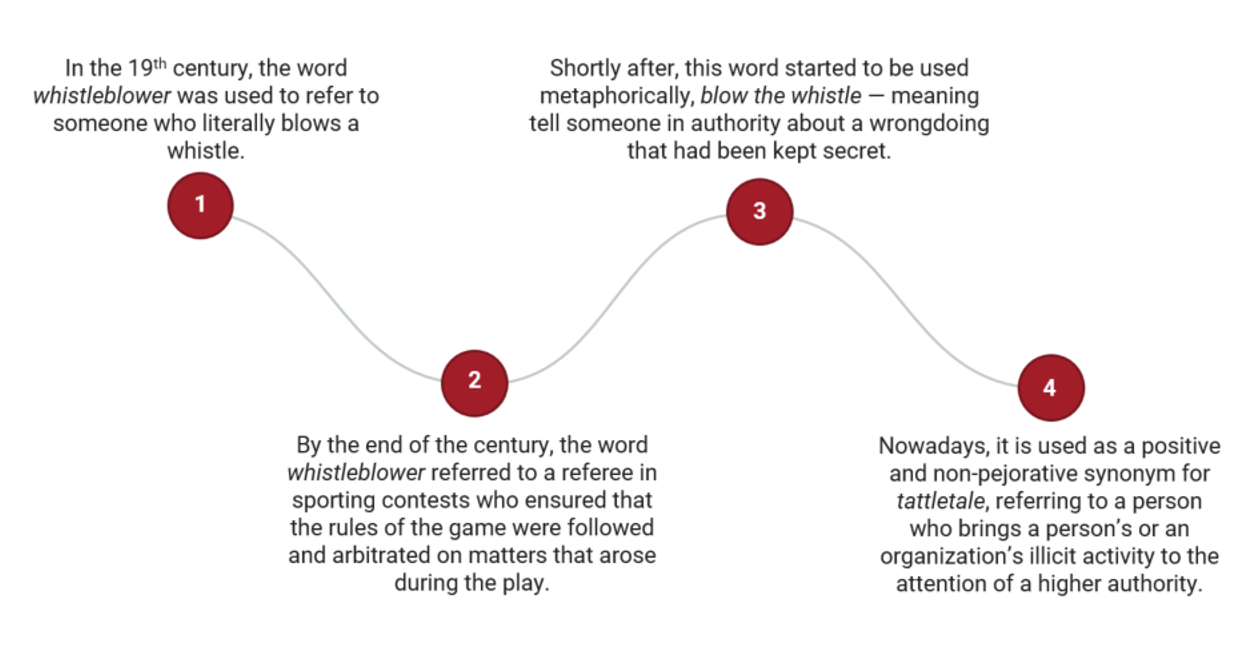
Figure 1. The origin of whistleblowing as a concept, according to Merriam-Webster
An introduction to ISO 37002
Published in July 2021, ISO 37002 is an international standard that provides guidelines for establishing, implementing, maintaining, and improving a whistleblowing management system (WMS) based on the principles of trust, impartiality, and protection. It provides guidelines on a four-step process: receiving reports of wrongdoing, assessing them, addressing them, and concluding whistleblowing cases. Organizations using ISO 37002 to implement a WMS can achieve the following:
- Encouragement and facilitation of reporting a wrongdoing
- Support and protection for whistleblowers and other interested parties involved
- Proper means of dealing with reports
- Improved organizational culture and governance
- Reduced risks of wrongdoing
ISO 37002 follows the High-Level Structure (HLS) and shares the common terminology with other management system standards developed by ISO. It is applicable to all organizations, regardless of their type, size, and industry. It can be used as a stand-alone guidance or as part of a more comprehensive set of management system standards. This standard is a Type B management system standard, meaning that it is not intended for certification.
Benefits of ISO 37002
ISO 37002 guidelines provide guidance for organizations wishing to implement a whistleblowing management system or improve their existing whistleblowing policies and procedures. Implementing a WMS based on ISO 37002 demonstrates an organization’s commitment to effectively prevent, detect, and respond to wrongdoings. Additionally, it helps them encourage employees to report any wrongdoing when they see or detect it, knowing that they will be fully protected when doing so. Some of the benefits of implementing a WMS based on ISO 37002 are listed below, in Figure 2.
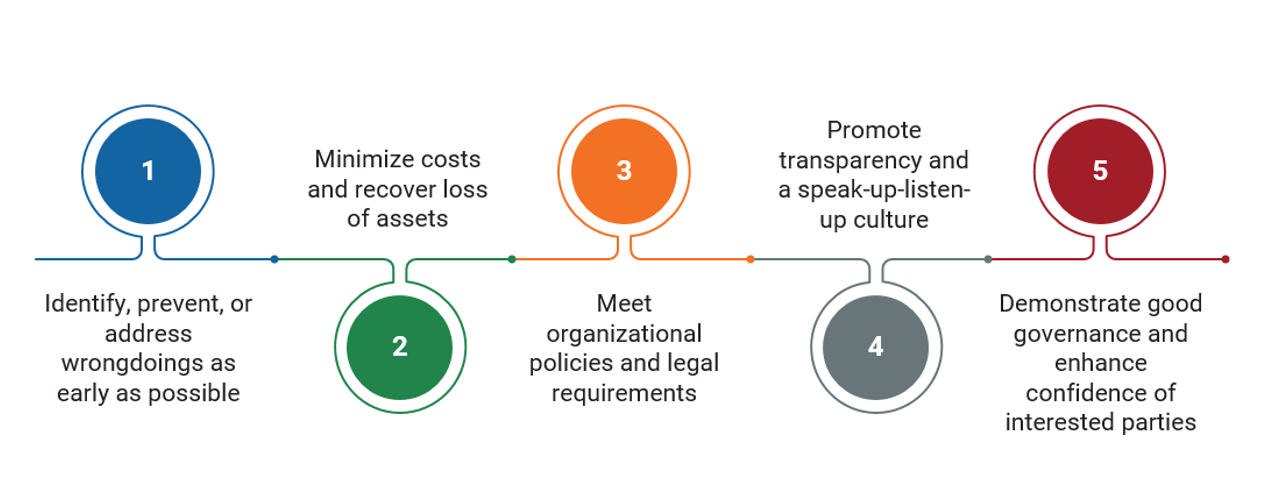
Figure 2. Benefits of implementing ISO 37002 for organizations
PECB ISO 37002 training courses
Our training courses provide definitions, examples, explanations, and additional information related to ISO 37002. They will help you understand the standard and develop the competence necessary for implementing a WMS in your organization, or simply learn more about whistleblowing. Furthermore, exercises and quizzes included in the training courses engage you with the material and help you stay focused.
Our training courses will help you:
- Understand the basic concepts of ISO 37002
- Understand the benefits of a whistleblowing management system
- Gain competence in planning, implementing, maintaining, evaluating, and improving a whistleblowing management system
- Learn about compliance with organizational and legal requirements for whistleblowers, and management of whistleblowing processes
Benefits for individuals attending PECB ISO 37002 training courses
Our training courses help you develop the competencies to design and implement whistleblowing controls and mechanisms, and integrate these in an organization. In addition, you will also learn about supporting whistleblowing policies as an employee and learn about legal rights and additional information related to whistleblowing.
Being trained on ISO 37002:
- Demonstrates your knowledge of an internationally recognized standard for whistleblowing management systems
- Demonstrates that you have the competence needed to plan, implement, maintain, and improve a WMS
- Provides you with opportunities to further improve your reputation and career as a manager, consultant, or employee
- Helps you demonstrate awareness of the importance of creating a culture of integrity, accountability, and transparency in a working environment
Why choose PECB?
As a global provider of training, examination, and certification services, PECB aims to help you demonstrate commitment and competence by providing you valuable education, evaluation, and certification against internationally recognized standards.
Getting started with PECB ISO 37002 training courses
We at PECB are excited to welcome you to our global network. We will assist you throughout the entire process in order to offer you a worthwhile experience.
Contact us to begin with the first step
PECB Certified ISO 37002 training courses available
Enhance your knowledge and advance your career by participating in our ISO 37002 training courses.
What is Root Cause Analysis?
Root Cause Analysis is a well-known method to find the primary causes of a problem by sourcing a wide range of tools and techniques. By looking at the reasons of why a problem occurs, you can correct or eliminate the incidence of the underlying problem. A Root Cause Analysis tends to uncover issues such as faulty design and materials, failure of machines, human error, incorrect work instructions or procedures, among many other structural issues.. Thus, its importance is paramount when attempting to evaluate the system and reduce or eliminate errors.
Why are Root Cause Analysis Trainings important for you?
By becoming acquainted with Root Cause Analysis, you will become competent to apply the adequate tools and techniques to address a specific problem. Moreover, having such a platform in place will enable you to minimize or eliminate the occurrence and reoccurrence of likely incidents.
Obtaining a Root Cause Analysis certification shows that you have the ability to pinpoint the causes of undesirable events and provide instant corrective actions, before they have an impact on other processes, systems or people. By having a root cause analysis infrastructure in place, you will be able to thoroughly analyze the situation, quickly identify the error causing factors, and set forth parameters to mitigate and repair them.
This will help you to prove to your stakeholders that you embrace a culture of continuous improvement, and that you are willing to assist an organization in increasing its productivity and decreasing its downtime.
Benefits of Root Cause Analysis Trainings
By becoming certified with Root Cause Analysis, you will be able to:
- Identify potential risks
- Solve problems more effectively
- Prevent the reoccurrence of problems
- Generate greater sales
- Increase productivity
How do I get started with Root Cause Analysis Trainings?
Having an effective Root Cause Analysis (method) in place shows your commitment towards improving business processes, thus our experts are here to help you become part of a global professional network and gain worldwide recognition.
PECB Certified Root Cause Analysis Training courses available
Learn more about Root Cause Analysis by attending one of PECB’s training courses. Choose the course that suits you best and become part of our professional network.
For additional information, please contact us at info@isotrainings.in

